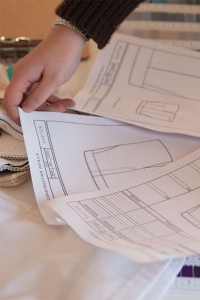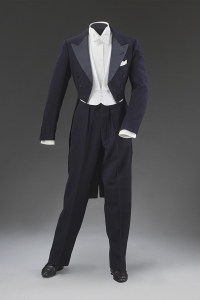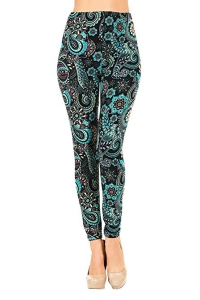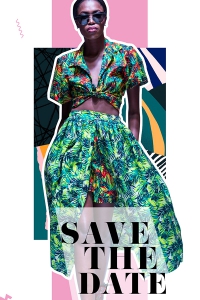Ethical fashion isn’t just a passing fancy. It’s the way of the future. From personal satisfaction to branding, PR, and even your bottom line, here are several of the best benefits that come with maintaining a sustainable fashion brand.
Sustainable Fashion Fights Fast Fashion
Fast fashion may be attractive to consumers, but those inexpensive clothing choices have some fairly dire consequences on the environment that we all share. In addition, the pressure that they put on smaller fashion brands to mass-produce a constantly changing product line can make it difficult to survive. However, sustainable fashion opens up the doors for the fashion world to fight back against the negative effects of fast fashion. Brands like Finisterre and Veja provide affordable attire while simultaneously allowing fashionistas to incorporate sustainable passion projects such as fighting for workers’ rights or preventing pollution directly into their business focus.
Sustainable Fashion Can Provide Unique Funding
As a business owner, you know that your fashion line can’t survive if it doesn’t turn a profit. In other words, no amount of charitable, Earth-saving endeavours will survive, let alone thrive, if you can’t keep your business alive. Many entrepreneurs tend to ignore sustainability as an “expensive alternative” that isn’t even worth consideration when a company is still a startup or in an early growth period. However, many modern legislative initiatives have made sustainable business not only possible but profitable. For instance there are several business energy investments and grants available at different times for things like solar tech, fuel cells, wind turbines, and geothermal systems.
Sustainable Fashion Can Provide Unique Funding
As a business owner, you know that your fashion line can’t survive if it doesn’t turn a profit. In other words, no amount of charitable, Earth-saving endeavours will survive, let alone thrive, if you can’t keep your business alive. Many entrepreneurs tend to ignore sustainability as an “expensive alternative” that isn’t even worth consideration when a company is still a startup or in an early growth period. However, many modern legislative initiatives have made sustainable business not only possible but profitable. For instance there are several business energy investments and grants available at different times for things like solar tech, fuel cells, wind turbines, and geothermal systems.
All of these can be expensive, which is why many companies have avoided them in the past. However, if the cost is offset by a tax credit, it can ultimately allow you to operate more sustainably while avoiding the added expense. It even provides an additional eco-friendly promotional element that can increase sales and, by extension, the profitability of your brand.
Sustainable Fashion Can Save Money
While sustainability is often seen as an expensive proposition, there are many ways that genuine sustainability can actually save your company money. For instance, many eco-friendly packaging options, such as recycled paper or biodegradable packing peanuts, can actually be purchased at equivalent prices compared to environmentally harmful alternatives.
Sustainable Fashion Can Save Money
While sustainability is often seen as an expensive proposition, there are many ways that genuine sustainability can actually save your company money. For instance, many eco-friendly packaging options, such as recycled paper or biodegradable packing peanuts, can actually be purchased at equivalent prices compared to environmentally harmful alternatives.
When approached strategically, shifting to sustainable practices can not only demonstrate ethical awareness, it can literally increase your bottom line. Companies like Clavin Klein’s parent company PVH have been ambitiously pursuing recyclable packaging for years, enabling them to preserve the environment and attract eco-conscious consumers in the process.
Sustainable Fashion Increases Customer Loyalty
The 21st-century world is full of ethically aware, environmentally-conscious consumers that don’t simply want to purchase a new set of clothes. They want to invest their money into something that will make a difference. In fact, a great deal of current fashion is targeted at the millennial market segment. This demographic, in particular, is unique in history as one that places an unusually high emphasis on transparency and social impact.
This focus on corporate social responsibility shines the spotlight on businesses, great and small. The point of this spotlight? Not to simply discover if a company has quality products, but rather to discover how those products are produced, marketed, and delivered to consumers. By supporting sustainable practices, such as a circular economy, fair trade standards, and ethical treatment of employees, you naturally make your company more attractive to one of the largest fashion audiences in existence. If you don’t do so, you can suffer from a tarnished reputation, as has been the case with multiple fashion labels of late, such as Forever 21, H&M, Payless ShoeSource, and Aeropostale.
Sustainable Fashion Builds Brand Awareness
One of the classic struggles with building a brand — especially in a highly competitive niche like the fashion industry — is building brand awareness. Fortunately, adopting sustainable business practices can be a tool in the struggle to be seen. For instance, if your fashion line makes a donation for each sale, such as Bombas socks, it naturally encourages customers to spread awareness of your brand via word of mouth.
One of the classic struggles with building a brand — especially in a highly competitive niche like the fashion industry — is building brand awareness. Fortunately, adopting sustainable business practices can be a tool in the struggle to be seen. For instance, if your fashion line makes a donation for each sale, such as Bombas socks, it naturally encourages customers to spread awareness of your brand via word of mouth.
Sustainable Fashion Helps David Compete With Goliath
As previously touched on, when the fashion world obsesses with cheap, fast fashion, it can have a detrimental effect on smaller fashion labels. Those who cannot manufacture their goods in sufficient quantities and at a rapid rate can lose out against larger competitors. However, when sustainability is introduced as a factor to offset an exclusive obsession with affordability, it allows smaller companies to compete with the Goliaths of the fashion world. Suddenly a handmade purse has added value to the consumer, even if it’s twice as expensive as a mass-produced clutch made in a factory overseas.
As previously touched on, when the fashion world obsesses with cheap, fast fashion, it can have a detrimental effect on smaller fashion labels. Those who cannot manufacture their goods in sufficient quantities and at a rapid rate can lose out against larger competitors. However, when sustainability is introduced as a factor to offset an exclusive obsession with affordability, it allows smaller companies to compete with the Goliaths of the fashion world. Suddenly a handmade purse has added value to the consumer, even if it’s twice as expensive as a mass-produced clutch made in a factory overseas.
At times, sustainability even brings the Davids and Goliaths together. For instance, Maiyet offers a kimono dress shirt created by a small, artisanal designer. They even donate a portion of the proceeds to charity, to boot, demonstrating the synergistic power that sustainability can have on large and small companies alike.
Shifting To Sustainability In Fashion
Sustainable fashion is already changing the way that consumers shop, and it’s important that fashion brands understand the impact that a shift towards sustainability can have on their label. A sustainable fashion brand in the 21st century can:
Shifting To Sustainability In Fashion
Sustainable fashion is already changing the way that consumers shop, and it’s important that fashion brands understand the impact that a shift towards sustainability can have on their label. A sustainable fashion brand in the 21st century can:
● Cultivate brand awareness and customer loyalty.
● Fight against harmful fast fashion trends.
● Espouse important causes through their business efforts.
● Increase their bottom line.
● Fight against harmful fast fashion trends.
● Espouse important causes through their business efforts.
● Increase their bottom line.
The critical factor revolves around fashion companies of all sizes recognizing the benefits that come with sustainability. Only then will they be able to commit to a truly sustainable, ethical business model that will yield all of the potential advantages to their business efforts.






